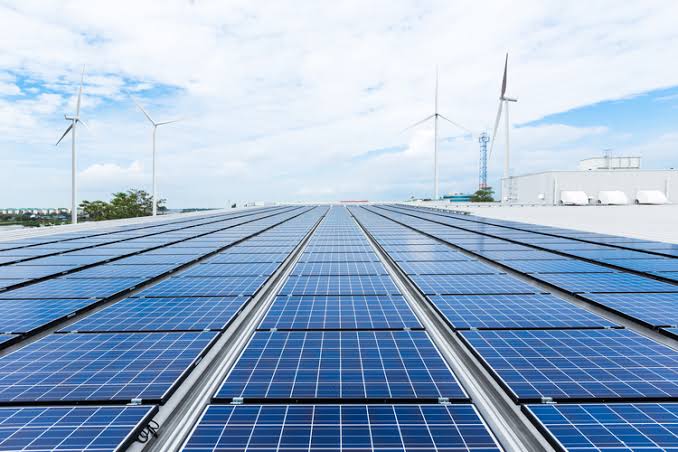The renewable energy industry in China now accounts for generation of significant 1,190 terawatts of electricity hours used in the country, nearly hitting its 2030 targets seven years ahead of time.
The feat is expected to take out significant part of the country’s cost of firing power generation with natural gas and channel funds into new investments in sustainable supply.
China had a total electricity consumption of around 8,310 terawatt hours in 2021, and the country’s total renewable power generation reached 45 percent of electricity hours consumed in the country.
As part of China’s goal to reach its CO2 emissions peak by 2030 and to reach carbon neutrality by 2060, its plans include increasing the share of non-fossil fuels in primary energy consumption to 25% and to bring the total installed wind and solar capacity to 1,200 GW by 2025.
Wind turbines and solar panels are now generating almost enough electricity to power every home in China, agency sources reported on Tuesday. The two sources account for 21 percent jump in power output, according to the National Energy Administration.
That’s not far off total residential power consumption of 1,340 terawatt-hours, the NEA said, which was a 14% increase on the prior year as more people spent time at home because of the government’s stringent virus restrictions.
The near match underscores two important things about China’s power system. One, of course, is the rapid growth in renewables as the country sinks hundreds of billions of dollars into meeting climate goals and reducing its reliance on expensive fossil fuels.
But tempering that is a second point: the relative insignificance of household power when it comes to energy demand in China. Just 17% of electricity use there was classified as residential in 2020, according to the International Energy Agency. In the same year, homes accounted for 29% of power consumption in Japan, and a whopping 39% in the US. In China, factories are still king, with industry accounting for 60% of all electricity needs.
So, even with clean energy able to cover nearly every home, China’s generators still needed to burn more fossil fuels — and emit more greenhouse gases — just to keep up with what proved to be a relatively tepid year for economic growth.
The economy is expected to expand much faster this year after the lifting of Covid Zero. That means emissions will rise again even if there is enough wind and solar to keep the stove on and refrigerator cold in every home.
Reports have it that rising renewable power generation by China holds medium to long term threat to oil and gas demand, even though the country currently imports the bulk of its oil under a rogue arrangement with Russia which under international trade sanction.











